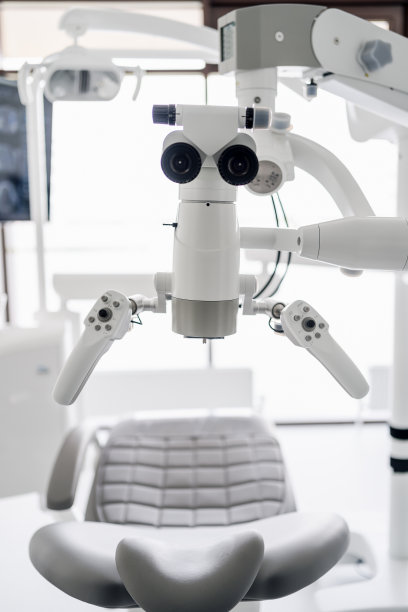Revolutionizing Dentistry Through Advanced Dental Implant Treatments
Summary: Revolutionizing Dentistry Through Advanced Dental Implant Treatments paves the way for cutting-edge innovations in dental care, promising superior results and enhanced patient experiences. This article dives into the transformative impact of advanced dental implant treatments on modern dentistry, exploring key advancements in technology, techniques, patient outcomes, and future prospects in the field.
1. Technological Advancements in Dental Implants

Over the years, significant technological advancements have revolutionized the field of dental implants, enhancing precision, efficiency, and overall treatment outcomes. One major breakthrough is the development of 3D imaging technology, allowing for detailed pre-operative planning and customized implant placement. With the integration of CAD/CAM technology, dental professionals can design and fabricate implant restorations with exceptional accuracy, ensuring optimal fit and aesthetics.
The advent of digital scanning and intraoral cameras has also streamlined the implant process, offering a more comfortable and efficient experience for both patients and practitioners. These technological innovations have significantly reduced treatment times, improved patient satisfaction, and elevated the standard of care in dental implant procedures.
Furthermore, advancements in materials science have led to the development of biocompatible and durable implant materials, such as titanium alloys and zirconia, which enhance osseointegration and long-term stability. The utilization of innovative biomaterials and surface treatments has propelled the evolution of dental implants, making them more resilient, functional, and aesthetically pleasing than ever before.
2. Enhanced Treatment Techniques and Protocols
Modern dental implant treatments have witnessed a paradigm shift in treatment techniques and protocols, optimizing success rates and patient outcomes. The introduction of minimally invasive surgical procedures, such as guided implant placement and flapless surgery, has revolutionized the way implants are positioned, reducing post-operative discomfort and accelerating healing processes.
Moreover, the incorporation of immediate loading protocols and same-day implant placement has transformed traditional treatment timelines, allowing patients to receive functional restorations in a single visit. Advanced bone augmentation techniques, including bone grafting and sinus lifts, have expanded treatment possibilities for patients with compromised bone volume, offering comprehensive solutions for complex cases.
Dental professionals are now equipped with a diverse range of treatment options and modalities, tailored to individual patient needs and anatomical considerations. These refined techniques and protocols have elevated the success rates of dental implant procedures, ensuring predictable outcomes and long-term success for patients.
3. Improved Patient Outcomes and Experiences
The evolution of advanced dental implant treatments has ushered in a new era of improved patient outcomes and experiences, creating a patient-centric approach to dental care. Enhanced diagnostic tools, such as virtual treatment planning software and digital smile design, empower patients to actively participate in their treatment journey, visualizing the final results and collaborating in the decision-making process.
Personalized treatment plans and aesthetic considerations play a pivotal role in modern implant dentistry, allowing for customized solutions that align with patients functional and aesthetic goals. The integration of patient-specific surgical guides and digital workflows ensures precise implant placement and restorative outcomes, enhancing treatment predictability and efficiency.
Beyond clinical outcomes, the emotional and psychological impact of advanced implant treatments cannot be understated, as patients benefit from restored confidence, improved quality of life, and a renewed sense of self-esteem. The combination of advanced technology, compassionate care, and tailored treatment approaches fosters a positive patient experience, encouraging long-term patient loyalty and satisfaction.
4. Future Prospects and Innovations in Dental Implantology
The future of dental implantology is brimming with exciting prospects and innovations that promise to further revolutionize the field. Ongoing research in regenerative medicine and tissue engineering holds the potential to enhance bone regeneration and implant integration, opening new avenues for treatment in compromised clinical scenarios.
Advancements in digital dentistry, such as artificial intelligence and virtual reality simulations, are set to redefine treatment planning and execution, offering more efficient, accurate, and personalized solutions for patients. The integration of bioactive coatings, stem cell therapies, and nanotechnology presents novel opportunities to improve implant success rates and long-term stability.
Collaborations between interdisciplinary teams, including dentists, researchers, engineers, and industry partners, will drive innovation and shape the future landscape of dental implantology. By embracing cutting-edge technologies, embracing evidence-based practices, and prioritizing patient-centered care, the field of advanced dental implant treatments is poised to continue its transformative journey towards excellence.
Summary:
Revolutionizing Dentistry Through Advanced Dental Implant Treatments heralds a new era of precision, efficiency, and patient-centered care in modern dentistry. With technological innovations, enhanced treatment techniques, improved patient outcomes, and promising future prospects, advanced dental implant treatments are reshaping the landscape of dental care, ensuring superior results and optimized experiences for patients.
This article is compiled by Vickong Dental and the content is for reference only



